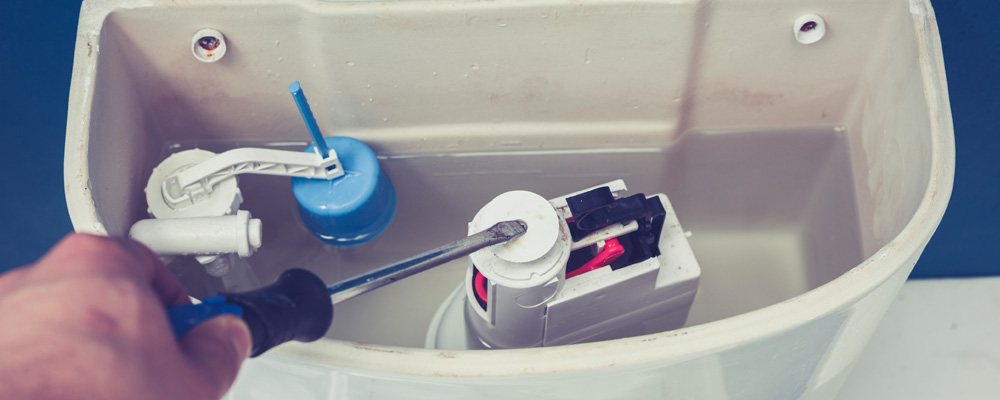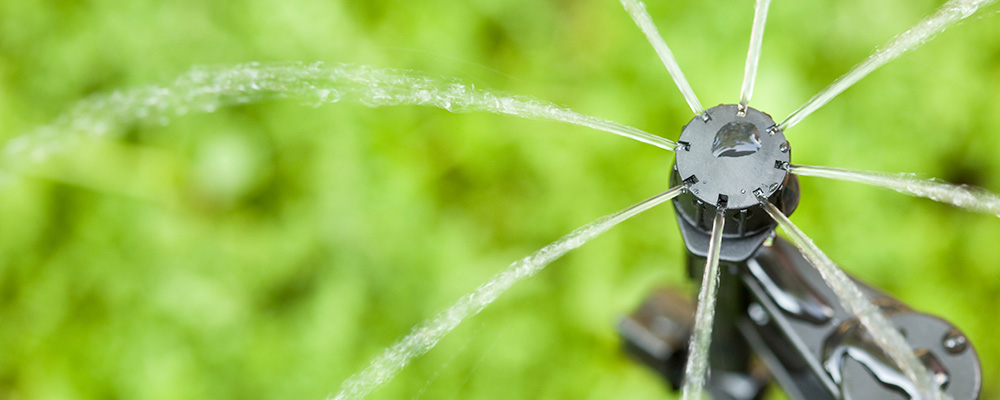Minimize Spikes in Your Water Bill
Water leaks are also a common cause of unusually high water usage. If you think you have a water leak, you can check your water meter to determine if there is a problem. Before checking your meter, ensure all water is turned off inside your home. If all water is off inside your home and the water meter dial is spinning, you have a leak. Once you have determined you have a leak, check the following items.

Toilets
Toilet leaks are one of the most common causes for an unexplained increase in water usage, and leaks at the flapper valve take first place. The average leaky toilet can waste about 200 gallons of water per day.
Symptoms
- A toilet that continually runs or stops running and starts up without flushing the toilet.
- High water bill with no other signs of leaks.
Recommendation
If you believe you have a leaky toilet, you should turn the water off to that toilet immediately. You can test the toilet for leaks yourself or hire a licensed plumber to diagnose and fix the leak for you.
DIY: How to test for toilet leaks
- Flush the toilet and wait for it to fill and stop running.
- Place a few drops of any colored liquid in the tank and leave for 15 to 20 minutes. When you return, look into the bowl to see if there is color in the water in the bowl. If so, you likely have a flapper valve leak. If you determine the flapper valve is what is causing the leak, skip to Step 4.
- Take the toilet lid off the tank, flush, and watch to see if water is draining into the overflow tubes when the tank is full. If this is happening, you likely have a fill valve leak or a stuck float.
- Once you have determined the valve or float is causing the leak, turn the water off to the leaking toilet.
- Purchase the valve or float needed to fix the leak and install yourself or call a licensed plumber to replace it for you.
The average leaky toilet can waste about 200 gallons of water per day.

Faucets and shower head
Faucet leaks are a common cause of increased water consumption. A leak of one drop per second can waste more than 3,000 gallons of water per year, so checking faucets regularly for leaks at the faucet head and seepage at the base and its connections are good practices. Common causes of faucet leaks include defective gaskets, o-rings, and/or washers. Luckily these types of leaks are pretty easy to catch and fix.
Symptoms
- Water seepage coming from the faucet head when the faucet is off or the base of the fixture when the faucet is on or off.
- Dripping showerhead when the shower is turned off.†
Recommendation
If you find that your faucet is leaking, you may need to replace the gasket, o-ring, washer, washer seat, or even the entire faucet if necessary. If you are able to determine the cause of the leak, you can try replacing the damaged piece yourself or call a licensed plumber to fix the problem for you.
Caution: If your leak is from a shower head, be extremely careful when removing the existing head because if it should break off while you are removing it, it could require a much more extensive repair.
A leak of one drop per second can waste up to 3,000 gallons of water per year.
Water Heater
Leaks at the water heater are potentially the most expensive type of leak because the electric and water portion of your bill are both affected. A leaking water heater can indicate any of several problems, ranging from loose valves to a corroded water tank.
Symptoms
Water leaking from water heater or the pipes and valves connected to it.
Recommendation
Pooling around your water heater or dripping from your water heater may indicate a leak at the temperature and pressure relief valve, the drain valve, or even the heating elements gasket. You can try diagnosing where the leak is coming from and fixing it yourself or hire a licensed plumber to repair or replace the leaky water heater.
DIY: Find and fix water heater leaks
- Determine if the leak is coming from the drain valve, temperature and pressure relief valve, heating elements gasket, or elsewhere.
- If you determine your drain valve is leaking, you can try tightening it; if this doesnít stop the leak you may need to replace the valve or call a licensed plumber to do the work for you.
- If you determine the temperature and pressure relief valve is leaking, the tank may have excess pressure from the temperature being set too high. Try lowering your heat setting to see if the leaking will stop. If the valve continues to leak, †you may need to replace the valve or call a licensed plumber to do the work for you.
- On electric water heaters, the heating element gasket can be the cause of a leaky water heater. If your heating element gasket is leaking, you can replace the gasket yourself or call a licensed plumber to do the work for you.
- If the leak is coming from another area on your water heater, it may be a sign that it is time to replace your water heater. At this point, you may want to consider calling a licensed plumber to diagnose the cause of the leak and your options for fixing it.

Irrigation System
Irrigation leaks are commonly found around the sprinkler heads. Sometimes soft, wet spots around the in-ground sprinklers indicate a leak is being absorbed into the ground. Irrigation leaks can significantly impact the water portion of your utility bill depending upon size and severity of the leak, so finding and
repairing these leaks as soon as possible are imperative.
Symptoms
Sprinkler head spraying incorrectly, sometimes gushing out rather than spraying. Soggy ground where irrigation pipes run under ground.
Recommendation
Check your irrigation system to ensure it is working properly when switching from winter to summer watering schedules. If you find broken sprinkler heads, replace the head before your next watering. If you find soggy ground around your irrigation pipes, you will need to repair the broken pipes or call a licensed landscaper to do the work for you. Note: It is good to check your irrigation system at least once a season to be sure all heads are in good working order and covering the appropriate area.
Tips
- Although this may not be related to a leak, checking to be sure your irrigation timer is set correctly can help you to avoid overwatering which can cause increased water bills.†
- Check the run time of each zone, you should run each zone to determine this.
- Set your irrigation system to run before 10 am or after 4 pm on your suggested watering days.
- Ensure your irrigation rain sensor is connected and working properly.
- It is very important to know the proper run time for each irrigation zone. Water requirements vary based on grass, time of year, location, soil conditions, amount of shade, and overall maintenance of a lawn. Visit your county extension office or floridaswater.com/wateringrestrictions for recommendations on irrigation frequencies for your area.
Water Softener
Water softeners regenerate as often as every day to once a month, depending on the settings. During and after regenerations, valves can get stuck open or partially open and can leak water until the next regeneration cycle or even continue leaking indefinitely.
Symptoms
Drain lines are leaking water while the system is not in the regenerating cycle. You should expect water to come from the drain lines while your system is regenerating, but water should not be draining any other time.
Recommendation
If you notice leaking water from your softeners drain line while it is not in the regenerating cycle, turn the water off to the softener to allow water to bypass the system. Once you have shut the water supply off to the softener, you should contact the installer you used or a licensed plumber to determine if the leak is coming from the tubing and the connections or if the problem is with the softener itself.
Water softeners regenerate as often as every day to once a month, depending on the settings.
Explore Solutions and Save
Learn about all the ways JEA helps Northeast Florida families, businesses and our community thrive and how we can help you do more.
Related Links
-
Irrigation Tips for Conservation and Savings
Did you know an estimated 30% of the water JEA provides our customers is used outdoors, primarily for irrigation? Up to 50% of that water is wasted because of evaporation, runoff and more. Making some of the simple changes below and knowing and following your watering days, can help conserve precious resources and help you lower your water bill.
-
Free Irrigation Assessments
You don’t have to drown in high water bills for the sake of a green lawn. Our experts will visit your home and show you how to get a green, beautiful lawn without the extra costs caused by overwatering.
-
Get Assistance
Customers in need of financial assistance with utility-related bills can receive help from United Way 2-1-1. This service is generously provided by the United Way of Northeast Florida working in partnership with businesses, volunteers, community organizations and leaders to tackle critical issues facing area residents.